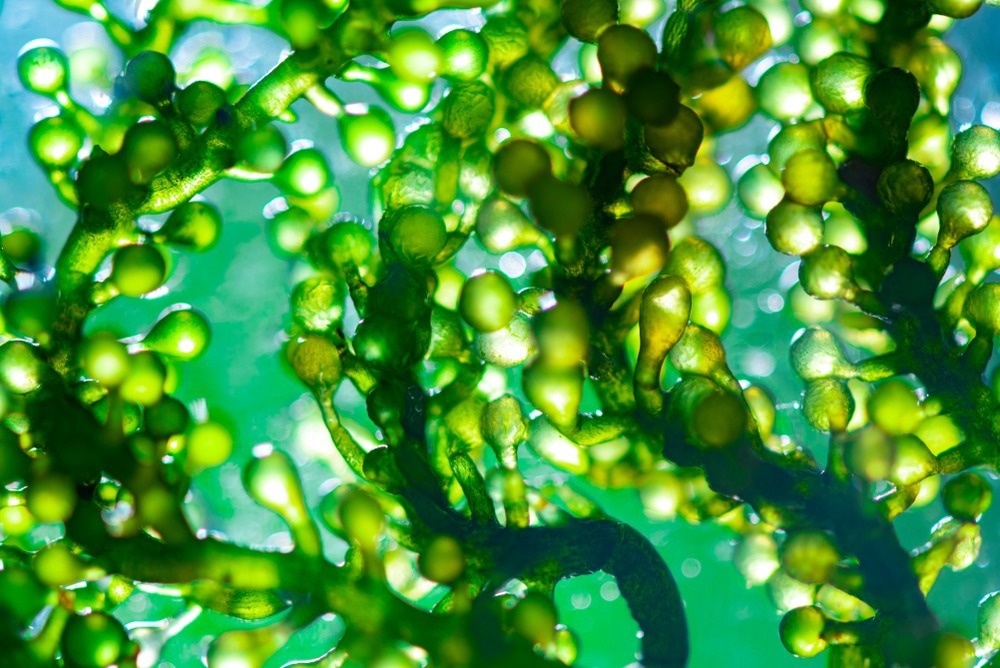In a paper published in Remote Sensing, a new approach for retrieving pigment concentrations was proposed. It is a stepwise regression method based on the hyperspectral phytoplankton absorption coefficient derivative and enhanced by the early stopping technique. This approach can efficiently monitor global phytoplankton communities in the global oceans.

Study: Retrieving Pigment Concentrations Based on Hyperspectral Measurements of the Phytoplankton Absorption Coefficient in Global Oceans. Image Credit: Chokniti-Studio/Shutterstock.com
Phytoplankton are essential to biogeochemical cycles and marine ecosystems. They are readily observable by optical sensors placed on many platforms across varied temporal and geographical dimensions.
Accurate pigment concentrations enable efficient information extraction from phytoplankton communities. However, there is currently no practicable method for extracting detailed pigment concentrations from the phytoplankton community with adequate precision and robustness.
What are Phytoplankton and Why Do They Need to be Monitored?
Phytoplankton, microscopic marine algae, are the ocean's primary producer. They are directly linked to the aquatic ecosystem, particularly the health of marine habitats and the global carbon cycle.
Obtaining regional and global data on phytoplankton community composition and biomass efficiently and robustly is very important.
Techniques to Monitor Phytoplankton Community
Phytoplankton community structure can be measured using a variety of in situ ways. However, the field sampling required by these approaches does not match the ocean observation criteria with higher density and wider scope over temporal and spatial scales.
The extensive use of optical sensors on various monitoring platforms, such as satellites and aircraft, makes collecting optical data with high temporal and spatial resolutions simple. Satellite technology helps to observe marine phytoplankton in water quickly and effectively.
As these hyperspectral technologies continue to improve, it is becoming increasingly vital for researchers to figure out how to retrieve phytoplankton community data from hyperspectral optical data.
Pigment Concentrations from Hyperspectral Phytoplankton Absorption Coefficient
Numerous studies have shown that hyperspectral remote sensing reflectance and particle absorption coefficients can be used to retrieve phytoplankton absorption coefficients (aph).
Phytoplankton pigment concentrations, cell size, and taxonomic information can all be derived from aph values, which are highly responsive to the phytoplankton population.
Therefore, aph could be a useful tool in investigating phytoplankton populations. It is critical to developing a method that can accurately and consistently measure the concentrations of various phytoplankton pigments in aph in the global ocean.
Several approaches exist for obtaining phytoplankton pigment concentrations from aph, including the matrix inversion and Gaussian decomposition methods. However, these methods have only been evaluated and shown to be appropriate for regional or surface water samples, with acceptable findings for partial phytoplankton pigments.
Due to the limitations of existing inversion methods or sample ranges, there has been no feasible method for obtaining the concentrations of the most detailed phytoplankton pigments from aph with sufficient accuracy.
Using the Stepwise Regression Method to Retrieve Pigment Concentrations
In this study, phytoplankton size class and pigment composition were used to evaluate inversion methods, and the second or fourth aph derivative was used to estimate phytoplankton pigment concentrations.
Researchers collected and evaluated a large dataset from different oceans at various depths to understand the relationship between matched aph values and phytoplankton pigment concentrations.
The characteristic wavelengths and pigment concentrations obtained by early stopping (ES-SR method) were analyzed extensively.
The stepwise regression method enhanced by the early stopping technique (ES-SR approach) was developed with the help of data analysis to extract pigment concentrations from aph derivatives using the global inversion method.
The inversion results from various approaches were compared, and the impact factors were evaluated to evaluate the ES-SR method's performance.
Important Findings of the Study
It was discovered that there is a significant correlation between the logarithms of phytoplankton pigment concentrations and the absolute values of the second and fourth derivatives of aph. This finding is crucial for developing pigment concentration inversion techniques from aph in oceans.
The ES-SR technique applied to the second derivative aph had the highest accuracy for each phytoplankton pigment compared to the derivative-based principal component regression and Gaussian decomposition methods.
The ES-SR technique was used to get the determination coefficient values for all phytoplankton pigments, and the results showed that more than half of these values surpassed 0.7.
The values obtained for all phytoplankton pigments had acceptable median absolute percentage and root mean square error values and matched the one-to-one line satisfactorily.
The impacts of pigment composition on different inversion techniques for pigment concentration were often more significant than those of size class. However, these effects may be minimized when the inversion method's performance improves.
The early stopping approach on second derivative aph can successfully extract characteristic wavelengths and pigment concentrations from different platforms that may monitor varied temporal and geographical scales throughout global oceans.
Using tools such as CHEMTAX, these recovered pigments can be used to calculate the composition and fluctuation of the phytoplankton population.
Future Recommendations
The early stopping approach on second derivative aph is impacted by a few impact variables, particularly those linked to pigment composition, for the inversion of specific pigment concentrations.
The global ocean must be divided into provinces based on the geographic distribution of the biota or regional absorption characteristics to retrieve pigment concentrations more precisely. Since there are fewer changes in impact variables within the same province, an inversion model must be developed independently for each province.
Reference
Teng, J., Zhang, T., Sun, K., & Gao, H. (2022). Retrieving Pigment Concentrations Based on Hyperspectral Measurements of the Phytoplankton Absorption Coefficient in Global Oceans. Remote Sensing, 14(15), 3516. https://www.mdpi.com/2072-4292/14/15/3516/htm
Disclaimer: The views expressed here are those of the author expressed in their private capacity and do not necessarily represent the views of AZoM.com Limited T/A AZoNetwork the owner and operator of this website. This disclaimer forms part of the Terms and conditions of use of this website.